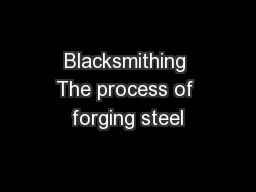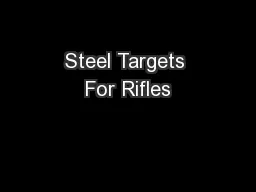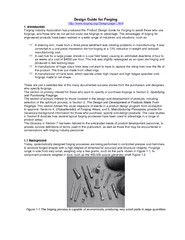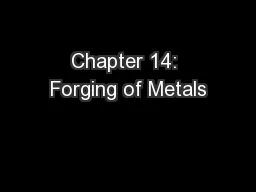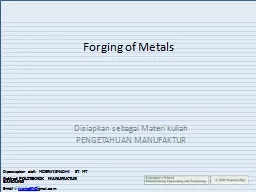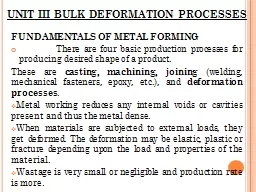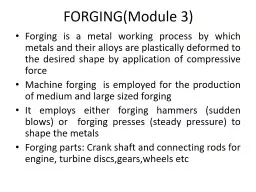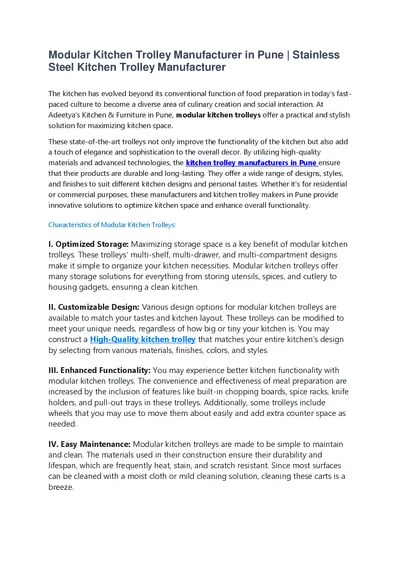PPT-Blacksmithing The process of forging steel
Author : giovanna-bartolotta | Published Date : 2018-03-22
Coal or Coke Rivet Forge heat the steel in the center of the forge the heat is controlled by the blower Blacksmithing Anvil Tongs and Straight Pein Hammer A full
Presentation Embed Code
Download Presentation
Download Presentation The PPT/PDF document "Blacksmithing The process of forging ste..." is the property of its rightful owner. Permission is granted to download and print the materials on this website for personal, non-commercial use only, and to display it on your personal computer provided you do not modify the materials and that you retain all copyright notices contained in the materials. By downloading content from our website, you accept the terms of this agreement.
Blacksmithing The process of forging steel: Transcript
Download Rules Of Document
"Blacksmithing The process of forging steel"The content belongs to its owner. You may download and print it for personal use, without modification, and keep all copyright notices. By downloading, you agree to these terms.
Related Documents

